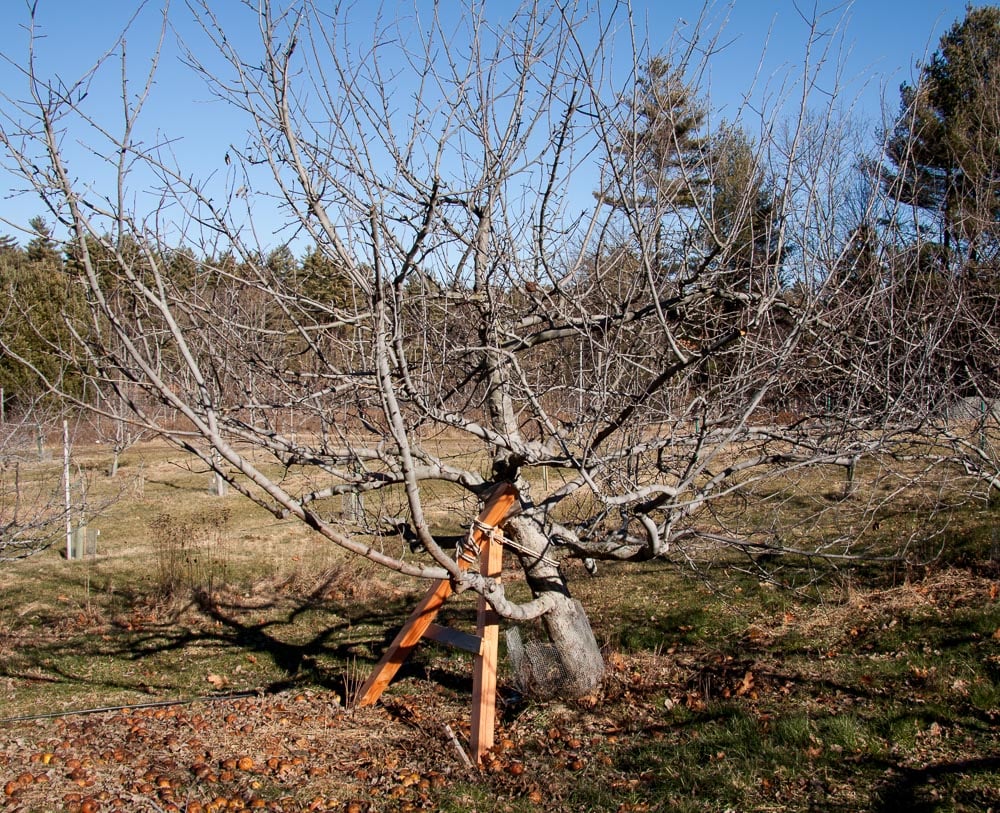My neighbor, Ed, offered to help me right a fallen apple tree. This tree is large, one of the beauties in the orchard, and three months ago it fell over – onto its knees you might say. The crop of fruit was so heavy it couldn’t support the weight. Leaning heavily to one side now, resting on some smaller limbs it waits. I know the roots must have been shattered, at least some of them, and it needs to be supported or it will fall over completely. But Ed thinks we should lift it back as upright as possible. I worry that we’ll do more damage.
It’s this question that I am always encountering in the orchard. How much do I control? How much in control am I? I tell my neighbor that I hear what he is saying. But I also know that this tree in the three months since it has fallen has done everything in its power to survive. Because nature wants to live. We all want to live. And it’s as much a question of spirit as it is about physical properties.
Rudolph Steiner, the German philosopher, said that plants are intermediaries between the celestial bodies and the earth. This tree is alive. It connects the jays and the squirrels who bicker among the old, hanging fruit. It connects my neighbor and me. We want to save it.
Two days later we meet. I have two wood two-by-fours for the tree’s support and we head to my shop to find bolts and nuts to put them together in an X shape. The fastener department in my shop is a medley of assorted screws, bolts, and other rusty paraphernalia. Ed picks up one bent bolt and says smiling, “Linda, you don’t really want to save this, do you?” Its curve echoes the crescent moon. I see his point but I say, “I wanna keep it.” I keep most things, especially when they are worn, threadbare, or rusty. He puts it back in the drawer with the other straight ones. Then we take our doubled up two-by-fours, ropes, chains, a piece of rug to put between the support and the tree, chainsaw, and loppers.
He drives his tractor and I drive mine. We position ourselves in adjacent rows on either side of the tree and string the ropes. We put our tractors in four-wheel drive lo-gear so the pull will be slow and gentle. I can’t hear Ed over the noise of the engines but see him nod, ‘ok’. We both start backing up and the ropes and chains from the trunk to each of our tractors tighten and stretch. Ever so slowly, this huge towering beast starts to awaken from its slumber. There are no bumps or hesitations; the tree lifts up, a silent resurrection.
We stop pulling, keep the tractors running, and climb down to assess. The tree is still leaning and Ed feels we should take it farther. The rising has been so easy and I don’t feel that we are further stressing the tree so I agree. We pull a little more and then decide it is enough. We install the support. Ed’s rope to his tractor is loose, but my tractor is still tethering the tree. Now is the test. As I drive forward and release the pressure will the tree support itself? I am anticipating that with the release there will be a settling back, but as I inch forward there isn’t the slightest movement of the tree. It is magnificent standing there on its own with arching lower limbs. Fruit still clings to its branches like holiday ornaments.
I think about the moments when I am ‘bent out of shape’, when I am annoyed or frustrated, when there are things I would rather be doing than what I need to do. To what or to whom do I turn to lift me out of this bent state? The meticulous attention required to right that tree and the act of working with my neighbor restored something in me. I remembered the bent nail in my studio fastener department. I decided to give it to Ed.

